Secret Libraries of Rome
Rome’s 2,500-year history means that even a trip to the corner drugstore turns into a brush with the heritage of insane emperors, antiquity-grabbing cardinals, visionary artists, and power-crazed popes. The city’s many libraries offer an intelligent way of making sense of this complex and well-trodden place. So what better way to experience history directly than in quiet contemplation in Rome’s “secret libraries”? Here is a list of nine to get you started.
BIBLIOTECA VALLICELLIANA
Via della Chiesa Nuova 18
 Biblioteca Vallicelliana (via francigena.beniculturali.it)
Biblioteca Vallicelliana (via francigena.beniculturali.it)
The Biblioteca Vallicelliana is almost hidden, its entrance located through a mundane door in the façade of baroque maestro Francesco Borromini’s Chiesa Nuova, not far from Piazza Navona. One of those shallow ceremonial stairways that unfortunately are no longer common leads to the library started by Saint Filippo Neri, the founder of the Congregation of Orators in 1575 and an avid bibliophile who put reading, study, and music at the center of his religious practice.
This was one of Rome’s first libraries built for public use, and the first in the world to stack books one on top of another vertically due to the invention of the printing press. Its collection includes books banned by the Catholic Church, as well as a bible owned by Charlemagne.
The main reading room today is lined by wooden stacks with a creaky wooden floor, where people come to study the library’s manuscripts and archaeological texts. Take a peek at the Sala Monumentale, across the hall from the main reception desk. Designed by Borromini himself and dating from 1644, this huge, high-ceilinged room is lined with two-story wooden stacks, which hide a spiral staircase in each corner that leads to the upper level.
SOCIETA’ GEOGRAFICA ITALIANA
Via della Navicella 12
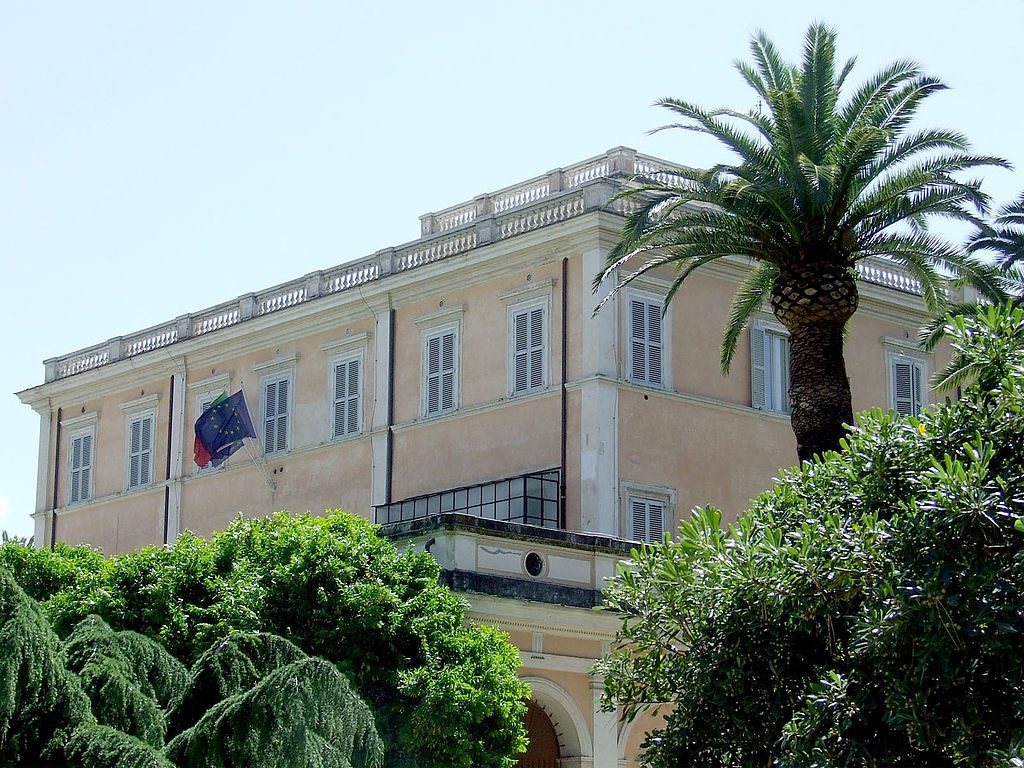 Società Geografica Italiana (photograph by PD/Wikimedia)
Società Geografica Italiana (photograph by PD/Wikimedia)
Tucked away in a honey-colored 14th-century villa, in a quiet park behind the Colosseum, the Società Geografica Italiana boasts one of the largest specialized collections of maps and geographical books in Europe.
Italy was a latecomer to the wave of exploration that went hand-in-hand with Europe’s empire-building in the 19th century. But its earlier preeminence in mapmaking and navigation (think Amerigo Vespucci and Christopher Columbus) means this library has a map collection that dates from before the discovery of the New World (Albino de Canepa’s 1480 map on Pergamon).
The main reading room is located off of the Mosaic Hall, where an ancient Roman mosaic dug up not far from the library decorates the floor, and 16th-century frescoes on the ceiling depict Spring and Autumn (in the form of a satyr eating grapes). In the reading room, which looks out onto the palms, cypress, and pines in the Villa Celimontana park, about five or six people each day come to thumb through the handwritten card catalogue dating from 1876 (though all of the library’s 400,000 books are available digitally through Rome’s central library). The bulk of the collection is dedicated to Italian and international explorers.
BIBLIOTHECA HERTZIANA
Via Gregoriana 28
 Palazzo Zuccari (photograph by Sailko/Wikimedia)
Palazzo Zuccari (photograph by Sailko/Wikimedia)
The Bibliotheca Hertziana is probably the only library in the world with a front door shaped like a giant mouth. Once inside, visitors step into a glass-walled modern atrium with white travertine marble floors, displaying three floors of open-stack shelves. The contrast with the entrance and the surrounding palaces off the Spanish Steps is a surprise.
The library was founded by Henrietta Hertz, a well-to-do German art lover who came to Rome at the start of the 1900s and decided that Rome needed an art library to encourage study of its ancient and modern treasures. She was bankrolled by a wealthy German industrialist, who set her up at the Palazzo Zuccari in the heart of Rome. Today the collection boasts 300,000 books and 800,000 photos on the history of Italian art and architecture, and is owned by the German government. Researchers tap away at their computers at 80 work stations, enjoying total silence and a view out over the rooftops of Rome towards St. Peter’s.
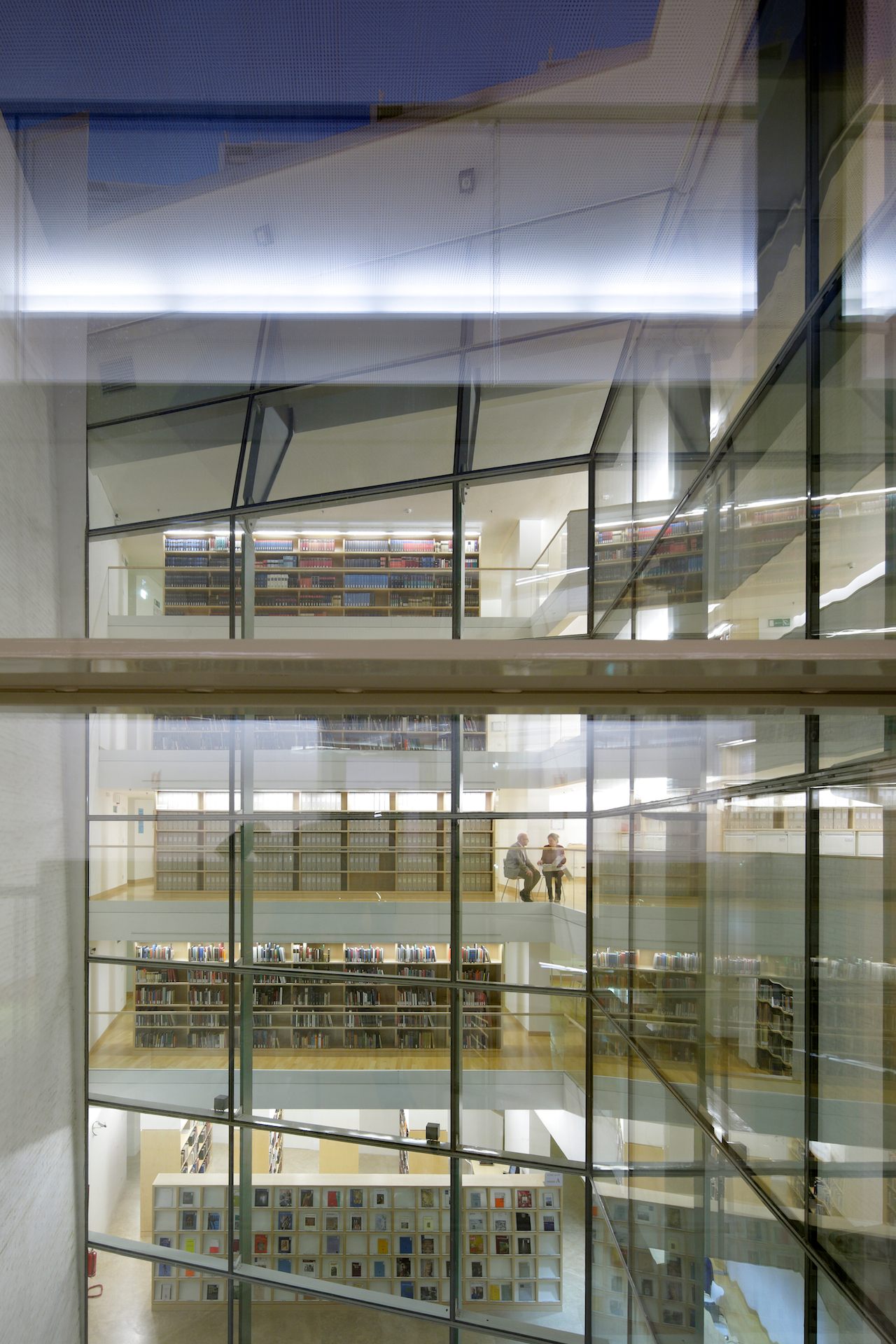 Photograph by Andrea Jemolo, © Bibliotheca Hertziana – Max-Planck-Institut für Kunstgeschichte
Photograph by Andrea Jemolo, © Bibliotheca Hertziana – Max-Planck-Institut für Kunstgeschichte
BIBLIOTECA LANCISIANA
Borgo Santo Spirito 3
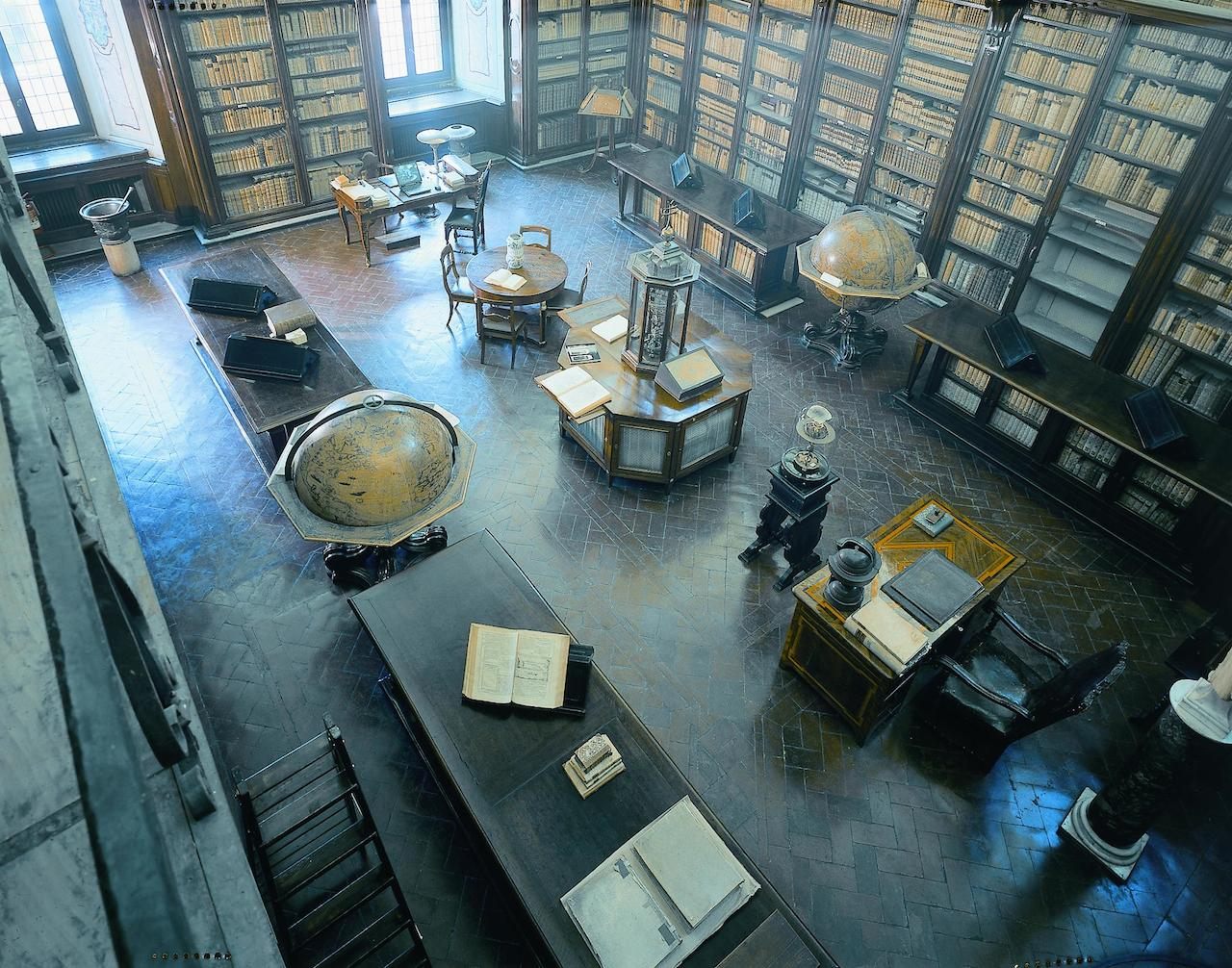 Biblioteca Lancisiana (photograph by the author)
Biblioteca Lancisiana (photograph by the author)
Located in a complex attached to a pilgrim’s hospice and hospital dating to 1198, the Biblioteca Lancisiana medical library a stone’s throw from the Vatican. While delightfully shabby, it is planned for restoration next summer.
Visitors pass through a courtyard lined with columns blackened by dirt and age, presided over by a clock with hands shaped like a salamander. The reading room of the library has 16 wooden shelves lining the walls, and old terracotta floors grooved by centuries of footsteps. Two globes by Vincenzo Coronelli, globe-maker for Louis XIV, stand in the center of the room.
The library was founded in 1714 by Giovanni Maria Lancisi, Pope Clement XI’s personal doctor, as a place to both study and carry out medical experiments. About 30 people come each year, to study art history (mainly the calligraphy in the 375 manuscripts). The bulk of the 20,000 books on mathematics, philosophy, medical science, and chemistry is from the 1700s.
 Biblioteca Lancisiana (photograph by the author)
Biblioteca Lancisiana (photograph by the author)
BIBLIOTECA CENCELLI
Piazza Santa Maria della Pieta 4
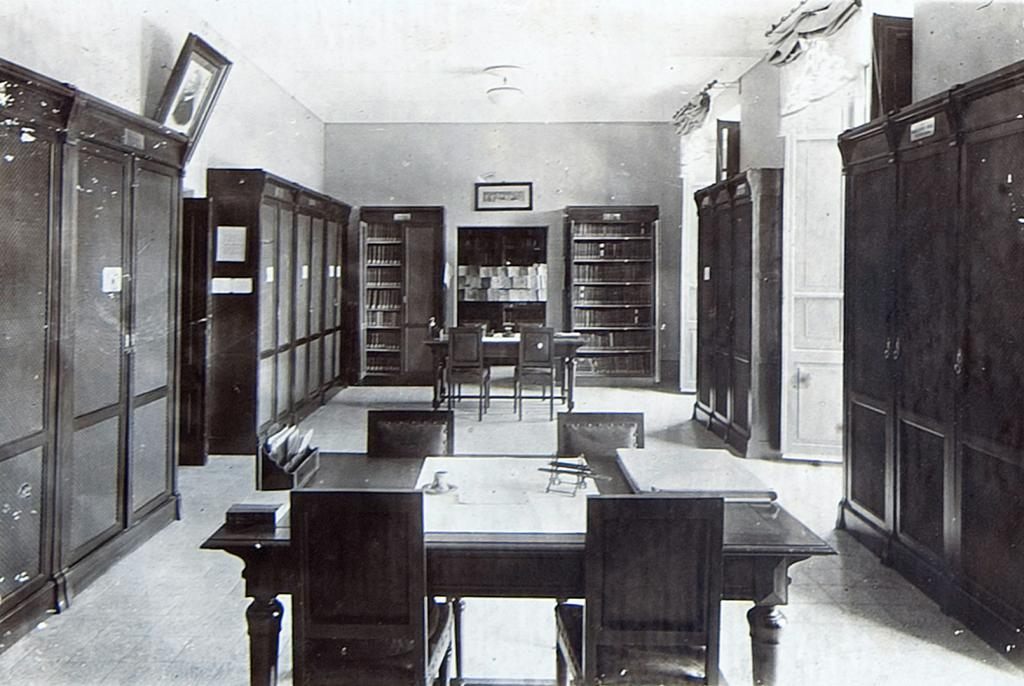
Archive image of the Biblioteca Cencelli
Perched on the Monte Mario hill overlooking Rome, the Biblioteca Cencelli specializes in psychiatry. It’s located in the headquarters of Rome’s former insane asylum, a big yellow building from 1907 with “Manicomio di Provincia” written across the top. The asylum was closed in 1999, and its 27 pavilions have been adapted for other uses, including a “Museum of the Mind.”
Visitors enter through a main gate, walk past a fountain, and go up a flight of stairs to a utilitarian set of rooms that house the library, which has a terrazzo floor and a long wooden table in the middle. The card catalogue has a mix of handwritten and typed cards. In a corner stands the patients’ registrar, written in longhand starting from before World War II and ending in 1990, when the hospital stopped accepting patients.
Students, researchers, and practicing psychiatrists come to read hard-to-find texts by French neurologist Jean-Martin Charcot, Emil Kraepelin (who developed a classification system still in use today), and Wilhelm Griesinger. Italian doctor Ugo Cerletti, inventor of electro-shock therapy, was a regular visitor in his lifetime.
CASA DEL JAZZ
Via di Porta Ardeatina 55
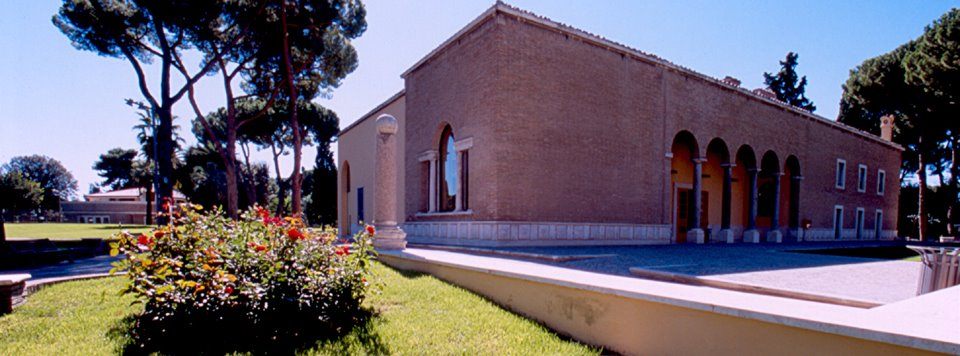 via Casa del Jazz
via Casa del Jazz
This hideaway off the beaten track near the Porta San Sebastiano is at the start of the catacomb-dotted Appia Antica. From the outside, the Casa del Jazz looks like all the other luxury villas spread across this archaeological area. Indeed, before it was confiscated and repurposed in 2005 by jazz-loving former mayor of Rome Walter Veltrono, the fascist-era Villa Osio belonged to a crime boss.
Nowadays, visitors are free to enter the imposing gate, walk past a fountain, and across the grassy park shaded by towering umbrella pines. The library is open to the public on the several days a month when there are concerts or other events. Visitors can look through rare books and magazines in italian and other languages, as well as listen to recordings and watch music on the library’s one television screen.
ARCHIVIO STORICO E BIBLIOTECA TEATRO DELL’OPERA DI ROMA
Via Firenze 60
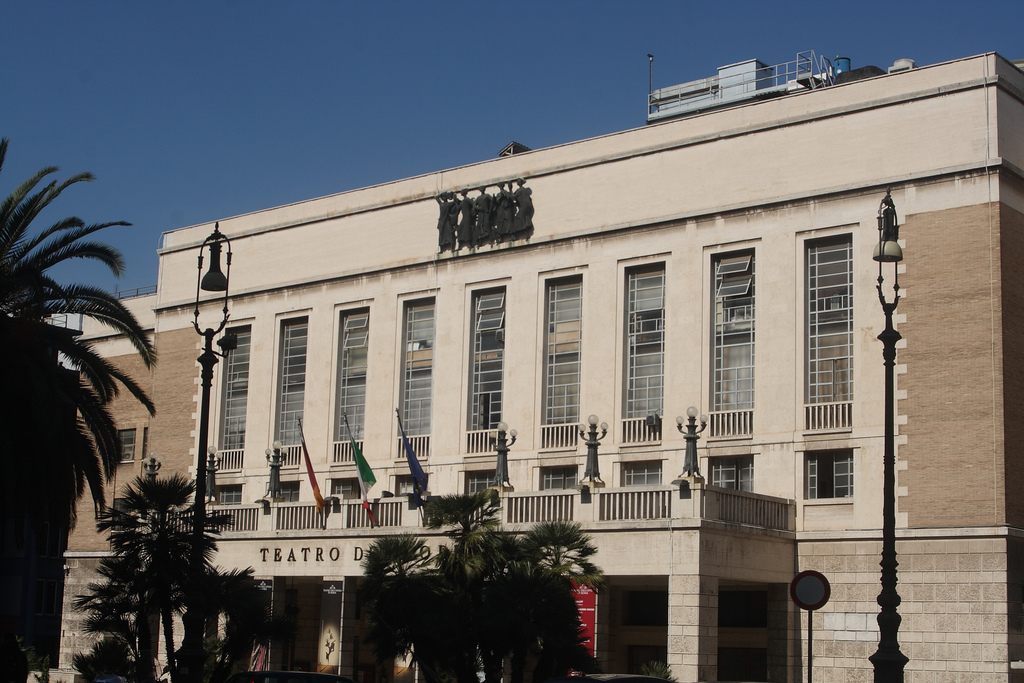 Teatro Dell’Opera (photograph by Matthew Black/Flickr)
Teatro Dell’Opera (photograph by Matthew Black/Flickr)
Founded in the 1880s to give the newly-unified Italian capital a new opera house, the Teatro Dell’Opera di Roma is less glamorous than its famed elder sisters in Milan and Naples. A small library is around the back of the theater, through a small foyer decorated with marble busts. The collection is specialized on the theater’s productions of “opera verista” of Pietro Mascagni and Giacomo Puccini.
Visitors to the two reading rooms can consult the collection of programs, set and costume designs, posters, librettos, press clippings, and other artifacts, as well as books about the history of opera, theater, and fashion. When you get tired of that, there are always the opera recordings.
BIBLIOTECA LUIGI CHIARINI
Via Tuscolana 1520
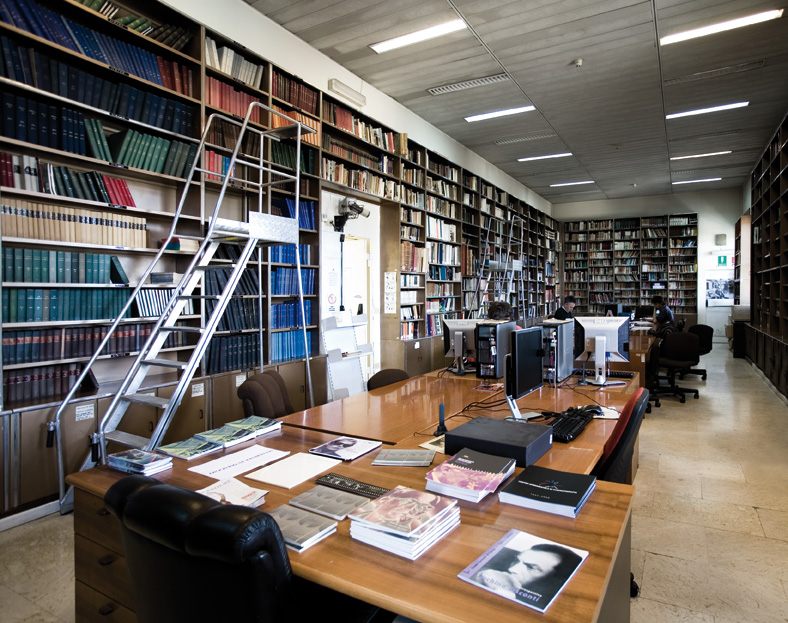 La Biblioteca “Luigi Chiarini” (courtesy Centro Sperimentale di Cinematografia)
La Biblioteca “Luigi Chiarini” (courtesy Centro Sperimentale di Cinematografia)
Dictator Benito Mussolini founded the Centro Sperimentale film school in 1935, two years before the Cinecittà film studios nearby, and the fascist-era building housing the school and the library has a lived-in feeling from the wear and tear of the past 80 years. It’s is accessed through an open-air courtyard punctured by a huge umbrella pine, and decorated with black and white photo stills from the films of Anna Magnani and Marcello Mastroianni.
But the collection goes far beyond “just” Italian cinema. Visitors can pore over a complete collection of US fan magazines Photoplay, Motion Picture, Modern Screen, and Screenland, for example, plus old issues of Vogue. The large and comfortable reading rooms are full of film students, and the staff is super helpful. The collection of over 100,000 books, scripts, drawings, posters, periodicals, and so on is currently being digitalized.
BIBLIOTECA STORICA NAZIONALE DELL’AGRICOLTURA
Via XX Settembre 20
 Courtesy Biblioteca Storica Nazionale dell’Agricoltura
Courtesy Biblioteca Storica Nazionale dell’Agricoltura
Italy would not be the foodie mecca it is today without its agricultural past, records of which are preserved in the Biblioteca Storica Nazionale dell’Agricoltura, a library so large that its keepers at the Ministry of Agriculture don’t know exactly how many volumes it contains. They are digitalizing the handwritten card catalog of 700,000 volumes at the rate of about 12 per day.
The collection started out as a technical and legal resource for the Ministry of Agriculture, Industry, and Commerce in 1860 in Turin, and its rooms are still decorated with the original wooden paneling. It now encompasses books like a guide to medicinal herbs published in Venice in 1545, and an illustrated guide to Roman gardens from 1772. Its complete illustrated ampelography, depicting Italian wine grapes, was reproduced as placemats for Verona’s annual wine fair Vinitaly a few years ago.
For more overlooked biblio-wonders, check out our guides to Secret Libraries of New York, Secret Libraries of London, and Secret Libraries of Paris.

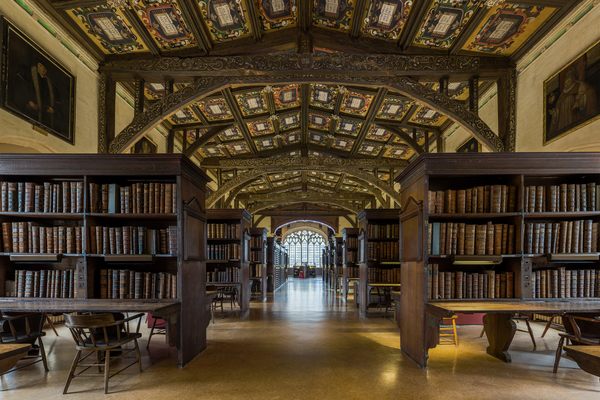











Follow us on Twitter to get the latest on the world's hidden wonders.
Like us on Facebook to get the latest on the world's hidden wonders.
Follow us on Twitter Like us on Facebook